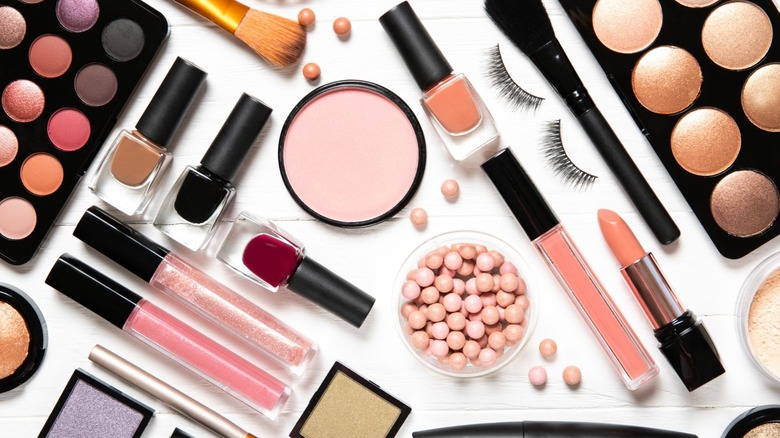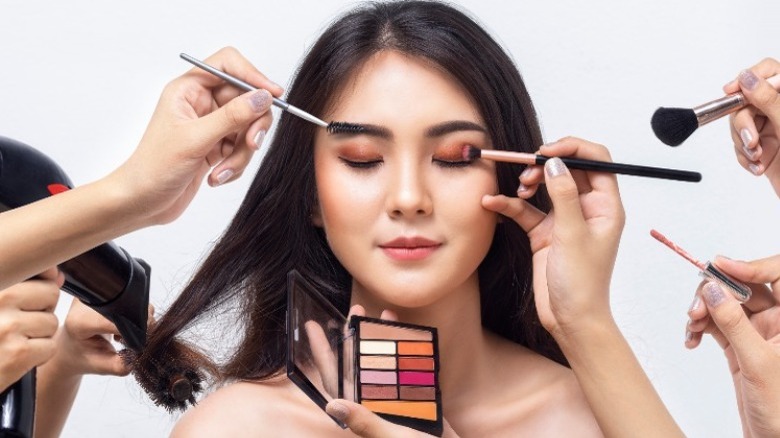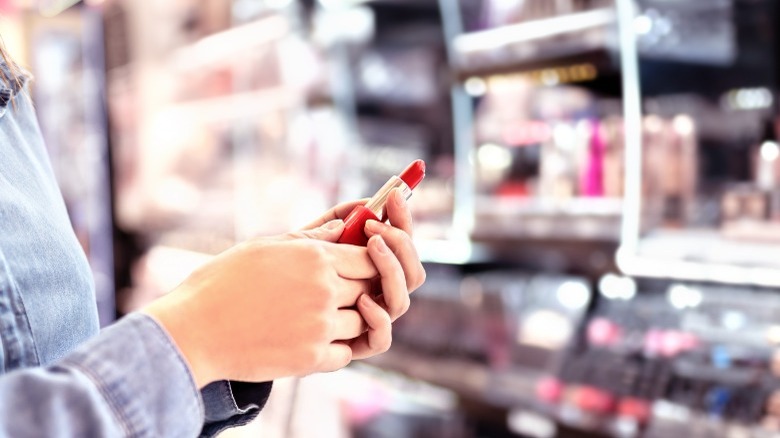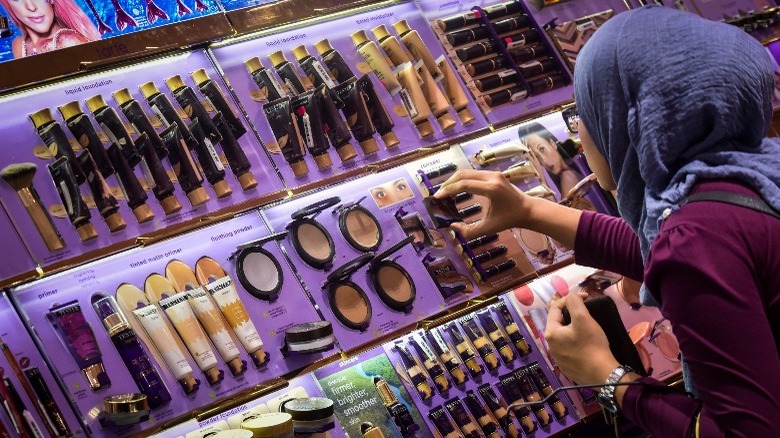Ingredients To Avoid When Buying Drugstore Makeup
Drugstore makeup is considered by many to be heaven-sent. After all, lipstick shouldn't always cost you $49 (no matter how velvety it makes your lips feel). So unless you've got mad money to blow, then a drugstore is a solid runner-up to beauty stores for finding quality makeup. Now you may be thinking that with cheaper prices may also come some cheaper, or less-than-clean ingredients. However, the fact of the matter is that there are plenty of toxic ingredients in both cheaper and expensive makeup.
Furthermore, cosmetics companies often utilize marketing techniques called "green-washing" (i.e., labeling products as "organic," or packaging them earthy-colored tones) to try to trick consumers into believing the products they are buying are 100% safe to use, according to The Good Face Project. That being said, it is imperative that you do your due diligence before purchasing items that may look "clean" as you may wind up doing your body more harm than good when putting on your daily makeup. After all, education is key when it comes to these things. So which ingredients should you avoid for dear life when scouring the shelves of your local drugstore during your makeup haul? Keep reading to find out.
You'll want to avoid PFAS
Some ingredients to absolutely avoid in cosmetics are called per- and polyfluoroalkyl substances (PFAS). Otherwise known as "forever chemicals," these toxins break down very slowly in the environment and the human body if ingested, according to Insider. PFAS are often found in cosmetics, as well as many other products, including nonstick cookware, stain-resistant carpeting, and water-repellent clothing, according to WebMD. PFAS have been linked to a number of serious health problems including cancer, obesity, infertility, and hormone imbalances.
These toxins are added to cosmetics (specifically liquid mascaras, lipsticks, and foundations) to add durability and spreadability. "The concerning thing about cosmetics is that these are products that you're applying to your skin and face every day, so there's the skin absorption route that's of concern, but also incidental ingestion of cosmetics is also a concern as well," Tom Bruton, PhD, senior scientist at the Green Science Policy Institute in Berkeley, CA, and co-author of a recent study conducted on PFAS, told WebMD. The study, which tested 231 cosmetics products throughout the United States and Canada, found that about half contained high fluorine levels, which strongly indicates the presence of PFAS, according to Insider.
The tricky part about identifying PFAS in your products is that most companies don't list them as ingredients on their labels. However, you can use consumer-friendly apps such as Clearya to help you determine if your makeup contains PFAS, according to Insider.
Try to avoid phthalates, if possible
If you thought avoiding PFAS was hard given the lack of transparency by manufacturers, then trying to avoid cosmetics (or virtually any other product on Earth) that contain phthalates may prove to be even harder. Appropriately called the "everywhere chemical," phthalates are a class of chemicals that have been used since the 1920s to improve the flexibility and durability of plastic, and are found in thousands of every-day products (ranging from cosmetics, to soaps, to shampoos, to fragrances), according to legal publication JD Supra.
In the past few years, studies have linked phthalates to some major health issues, including asthma, attention-deficit hyperactivity disorder, breast cancer, obesity and type II diabetes, altered reproductive development, and male infertility. Phthalates have also been linked into neurological issues such as low IQ, behavioral issues, autism spectrum disorders, according to The Guardian.
Thankfully, due to growing public consciousness, some states in the U.S. have already restricted the use and disposal of phthalates, via JD Supra. Still, this is not the case everywhere, and it is very likely that many of your cosmetics products (especially those made with fragrances) contain phthalates. The ingredient to look out for specifically on cosmetic product labels is "dibutyl phthalate," according to The Good Face Project.
Parabens are fairly easy to avoid in makeup
You have likely heard of parabens by now, short for p-hydroxybenzoic acid esters. Parabens are a class of chemicals that are most commonly used to preserve cosmetic products, as well as prevent the growth of harmful bacteria and mold for the benefit of both the product and the consumer, according to the FDA. Now, you may be rightfully wondering, what exactly is wrong with that? Well, some studies have linked parabens, which have a similar chemical makeup to estrogen, to breast cancer cell growth, per WebMD.
Virtually everyone is exposed to parabens. And even though the body clears them out fairly quickly, the real problem is that people are exposed to them so often that we have them in our bodies practically all the time, according to WebMD. While there is some controversy surrounding the harmful effects of parabens, if you want to err on the side of caution, you can easily avoid buying makeup with this class of toxins as many cosmetics companies now proudly display that they are "paraben-free." If a product doesn't boldly state that, then two key ingredients to look out for in the label are propylparaben and isobutylparaben, according to The Good Face Project.



